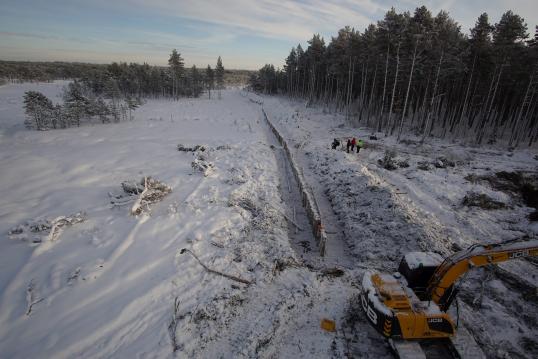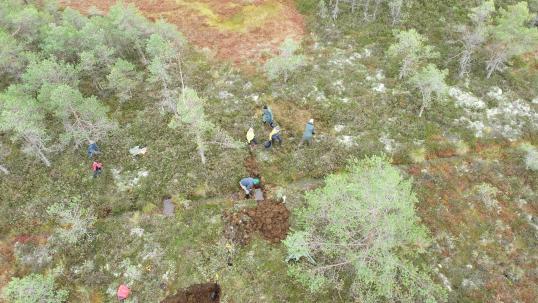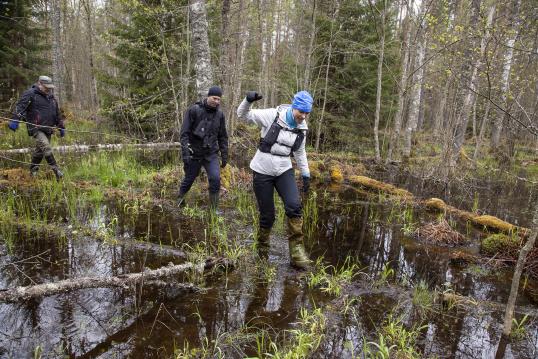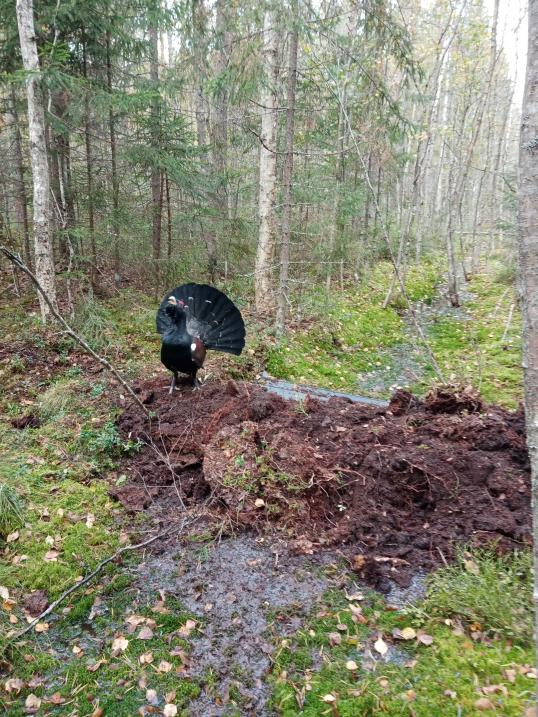
About the winner
| Lead applicants | Estonian Fund for Nature; University of Tartu; Archaeovision |
| Category | Conservation on land |
| Countries involved | Estonia |
| Main Natura 2000 sites | Six Estonian Natura 2000 sites: Tudusoo, Sirtsi, Lahemaa, Alam-Pedja, Agusalu and Ohepalu |
| Website | https://soo.elfond.ee/en/ |
Overview
Mires - wetlands characterized by peat formation - are vital for biodiversity conservation and carbon sequestration. Historically, many mires were drained for agriculture, halting their carbon absorption and degrading local flora and fauna.
The EU-funded "Mires Estonia" initiative aimed to restore key mire areas across six Natura 2000 sites in Estonia. Focusing on ten wetland habitat types recognized as EU conservation priorities—including active raised bogs, bog woodlands, and specific forest types—the project implemented best-practice conservation activities.
Coordinated by the Estonian Fund for Nature with support from Archaeovision and the University of Tartu, the project restored natural water conditions over nearly 8,000 hectares. This was achieved by closing a 317-kilometer drainage network, constructing around 2,500 dams, moving approximately 300,000 cubic meters of soil, and sowing sphagnum moss to enhance habitat regeneration. Remote sensing and on-site hydrological and botanical monitoring quantified the restoration's effects – the return of important species like the willow grouse (Lagopus lagopus), moor frog (Rana arvalis), western capercaillie (Tetrao urogallus), dragonflies (Leucorrhinia), and bog-associated butterflies increased.
Local event
The 2024 Natura 2000 Award winners in the "Conservation on Land" category recently hosted two captivating local events at the Natura 2000 sites they successfully restored. On 18 and 19 October 2024, 50 local residents embarked on immersive field excursions in the Tudusoo and Laukasoo Restoration Areas. These early afternoon adventures offered participants a firsthand glimpse into the remarkable recovery of the bog ecosystems.
Guided by experts from the University of Tartu and the Estonian Fund for Wildlife’s (ELF) wetland programme, participants explored various sections of the bog, including a distinctive birch grove typical of transitional bogs. Along the way, they learned about the diverse wildlife species that have returned to the restored areas, with a special focus on dragonflies flourishing near water bodies. A highlight of the tours was the opportunity to taste wild cranberries that have reappeared in the region.
Following each excursion, participants gathered for an indoor seminar in a nearby village. These sessions provided deeper insights from the project team, and a representative from the Environmental Board discussed the protection of other mires in the area. The seminar on the second day was further enriched by a presentation from Ute Goerres (European Commission).
Pictures from the winner
|
Videos from the winner:
https://www.youtube.com/watch?v=_EoQON9rrUg
Details
- Publication date
- 14 March 2024
- Author
- Directorate-General for Environment







